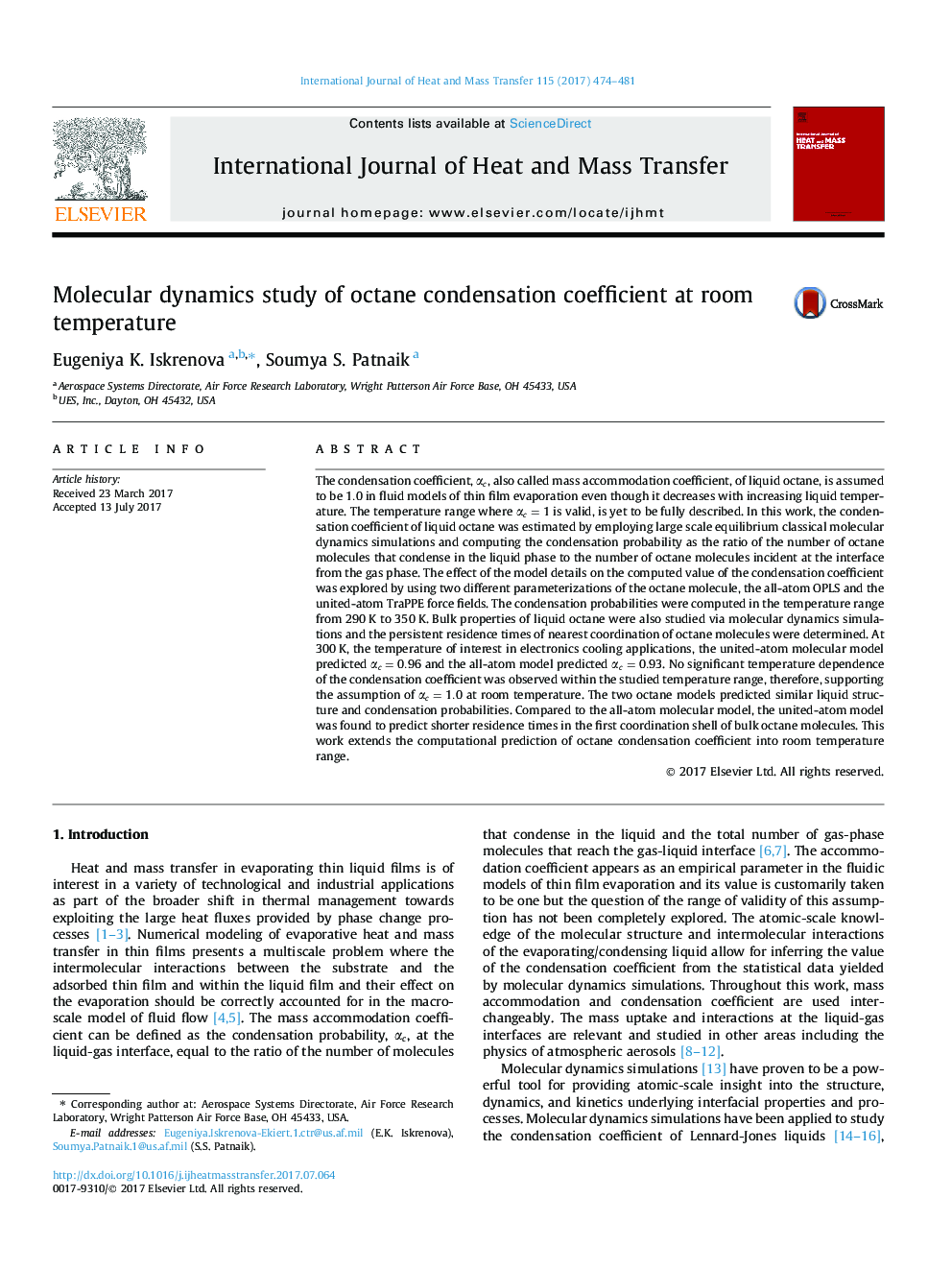| کد مقاله | کد نشریه | سال انتشار | مقاله انگلیسی | نسخه تمام متن |
|---|---|---|---|---|
| 4993484 | 1458026 | 2017 | 8 صفحه PDF | دانلود رایگان |
عنوان انگلیسی مقاله ISI
Molecular dynamics study of octane condensation coefficient at room temperature
ترجمه فارسی عنوان
مطالعه دینامیک مولکولی ضریب تراکم اکتان در دمای اتاق
دانلود مقاله + سفارش ترجمه
دانلود مقاله ISI انگلیسی
رایگان برای ایرانیان
موضوعات مرتبط
مهندسی و علوم پایه
مهندسی شیمی
جریان سیال و فرایندهای انتقال
چکیده انگلیسی
The condensation coefficient, αc, also called mass accommodation coefficient, of liquid octane, is assumed to be 1.0 in fluid models of thin film evaporation even though it decreases with increasing liquid temperature. The temperature range where αc=1 is valid, is yet to be fully described. In this work, the condensation coefficient of liquid octane was estimated by employing large scale equilibrium classical molecular dynamics simulations and computing the condensation probability as the ratio of the number of octane molecules that condense in the liquid phase to the number of octane molecules incident at the interface from the gas phase. The effect of the model details on the computed value of the condensation coefficient was explored by using two different parameterizations of the octane molecule, the all-atom OPLS and the united-atom TraPPE force fields. The condensation probabilities were computed in the temperature range from 290 K to 350 K. Bulk properties of liquid octane were also studied via molecular dynamics simulations and the persistent residence times of nearest coordination of octane molecules were determined. At 300 K, the temperature of interest in electronics cooling applications, the united-atom molecular model predicted αc=0.96 and the all-atom model predicted αc=0.93. No significant temperature dependence of the condensation coefficient was observed within the studied temperature range, therefore, supporting the assumption of αc=1.0 at room temperature. The two octane models predicted similar liquid structure and condensation probabilities. Compared to the all-atom molecular model, the united-atom model was found to predict shorter residence times in the first coordination shell of bulk octane molecules. This work extends the computational prediction of octane condensation coefficient into room temperature range.
ناشر
Database: Elsevier - ScienceDirect (ساینس دایرکت)
Journal: International Journal of Heat and Mass Transfer - Volume 115, Part A, December 2017, Pages 474-481
Journal: International Journal of Heat and Mass Transfer - Volume 115, Part A, December 2017, Pages 474-481
نویسندگان
Eugeniya K. Iskrenova, Soumya S. Patnaik,
